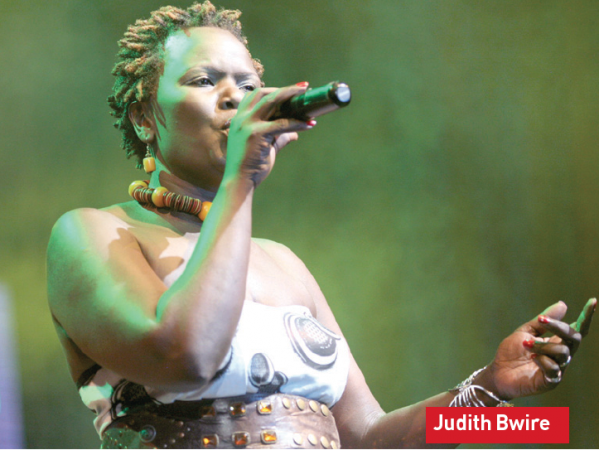The untapped potential: How artistes always looking for ways to excel
By People Team, May 23, 2022There is little doubt that Kenyan music is aesthetically diverse. Cross sections of consumers no longer necessarily need to walk into retail shops to pick an array of preferred songs on audio compact discs (CDs), Digital Video Disc (DVDs) or even cassettes and vinyl records. All one requires is a smartphone or digital gadget to access with ease some of the latest jams trending on YouTube channel or streaming platform.
For tech-savvy enthusiasts, varied on-demand streaming and auto-track download platforms options have flourished in recent years, enabling music lovers to tailor-make their own playlists. With a single click, one can purchase online, favourite or specific song downloads from a growing range of user-friendly digital apps such as Boomplay, Mdundo, Spotify, Tidal, iTunes/Apple Music, Amazon, Deezer, Pandora, Bandcamp and SoundCloud, among others.
Throw in some fancy earphones or fancier stereo headphones and viola! one gets to savour and listen-in to your treasured choice of music on iPads, tablets or multi-watts woofers hooked to smartphones. Those keen to buy vinyls or actual discs in most retail outlets, music racks are teeming with all type of music such as classics, slow jams, R&B, gospel, rap, pop, disco, jazz, bongo ‘flava’, boomba, genge, dancehall and reggae, among others. Numerous variants of benga rhythms albums are equally popular.
Lyrical repertoire
“The bulk of vernacular benga songs appeal to middle-class buyers mostly in the cities and urban centres. One-man-guitarists, bands or musicians whose lyrical repertoire rides on local dialects orientation, easily tap into this grassroots audience base,” notes Steve Njunge, a music vendor in Nairobi’s downtown.
Demand for slow tempo rhumba oldies, authentic traditional ohangla, chakacha, taarab rhythms, has hardly waned. A notable niche market also exists for afro-fusion songs, spiritual hymns, localised accapella tunes and reggae hits. The rekindling of interest in homegrown songs is a glaring indicator previous perceptions and contentions that locally produced music is mediocre, are gradually turning around.
A significant tidal wave spurring sporadic appeal for Kenyan flavoured hiphop songs has further raised stakes. The tracks’ popularity, hinges on unprecedented airplay on mainstream FM radio and TV stations. An unlimited flow of ostensibly amateurish hits, incessantly bounce off multi-watt boom boxes in nightclubs, pubs, public service vehicles, or call-in shows on select FM channels.
A bulk of digitally engineered tracks, never mind monotonous beats programming, stem off a pool of fresh-faced, ambitious rap musicians, eager to perfect rhyming and lip-synching craft.
“The rap rhymes may not be the best Kenya can offer, but after years of foreign songs dominance on our airwaves, it is great to regularly tune in to consistent rotation of local music across multiple radio and TV channels,” enthuses Harry Kimani, an afro-folk fusion musician.
Liberalisation of electronic media over the past decade, gave rise to an initially steady, and in recent years, rapid growth of alternative FM radio and vernacular TV stations. As a spin-off effect, digital sequencing driven sub-genres, inclusive gengetone and kapuka songs, benefit immensely from previously elusive exposure in an era when foreign music still gobbles a dominant chunk of airplay on mainstream channels.
“Its appeal among the younger generation is indisputable. But the local hiphop flavours are yet to significantly grow on sections of the working class, who can hardly relate to the sheng lyrics,” notes Khadijah Bakari, a Malindi-based sales executive and a music enthusiast.
However, a subtle sense of seeming disquiet persists, more so among potential cross-generational consumers, struggling to quench somewhat thirsty cravings for quasi-indigenous inclined productions. Critics point out at a discordance of sorts, stirred up by lack of sound, proactive music industry structures necessary to nurture the multi-billion worth Kenyan showbiz sector’s latent potential.
Career versatility
“Making music is not about being newspaper-headlines-famous or even earning overnight popularity. A professional artiste is required to invest in learning to play at least an instrument,” remarks Kombo Chokwe, a versatile guitarist and Afro Simba band founding member.
He is quick to point out that owing to multiple import goods duty taxes, the subsequent costs are quite prohibitive for unemployed beginner artistes to purchase own music or band equipment.
Stimulating structures
“One major setback stifling raising the bar in local music is lack of goodwill and commitment from the government and private sector. Numerous key structures required to stimulate the industry to grow and thrive are not yet in place,” asserts afro-fusion artiste Judith Bwire aka Mama Afrika.
Inadequate access to professional studio production facilities is often singled out as a crippling bottleneck. But on the flip side, this gap spawned the mushrooming of makeshift home studios in cities and urban towns, owing to availability of varied computerised digital apps and tracks sequencing software.
As musicians concede their frustrations can ease if potential investors commit to fund the sector, it is imperative relevant that government agencies get involved to spur infrastructural development. An emergent movement of passion-driven creatives are increasing opting to professionalise their careers, as realisation dawns that it pays to step up to the ever-changing trends on global showbiz circles.
More significantly, a pressing need to enact and implement coherent government policies persists: could it be the missing link needed to transform the local scene’s potential into a competitive and lucrative music sector?
